Liquid dishwasher detergents
 With the advent of a dishwasher in the kitchen, you need to take care of choosing a detergent that would solve all problems with dishes. Finding high-quality household chemicals among a huge variety is not so easy. There are not only washing powders, but also tablets and liquid detergents. We will focus on the latter, understand their pros and cons, and review such funds.
With the advent of a dishwasher in the kitchen, you need to take care of choosing a detergent that would solve all problems with dishes. Finding high-quality household chemicals among a huge variety is not so easy. There are not only washing powders, but also tablets and liquid detergents. We will focus on the latter, understand their pros and cons, and review such funds.
Advantages and disadvantages
Liquid detergents cannot be called an analogue of powder; they may be similar in composition, but not identical. Unlike powder products, liquid products do not contain abrasive particles or other components that dissolve slowly. According to this criterion, they are better even compared to tablets. But this is not their only advantage; we list a few more advantages:
- act gently on the dishes without scratching them;
- convenient use and dosing, and therefore economical consumption;
- dissolve quickly, which is especially important if you choose short washing cycles;
- simply stored in hermetically sealed plastic packaging;
- do not emit volatile chemicals.
Only capsules can compete with liquid detergents, because they contain a gel, only already dosed.
By the way, liquid dishwasher detergent is best for pre-soaking.
How to use
Liquid dishwasher detergent is very easy to use. Usually no one has problems with this.However, some users who have been “familiar with dishwashers for a long time” and have been using liquid detergents for many years know some tricks that help them further improve the quality of washing dishes. First, let's look at the general procedure for using liquid products, and then we'll reveal a couple of secrets.
- We take the package with the liquid dishwasher detergent we like and carefully read what is written on it.
- We open the package with the product, and then open the dishwasher door.
- We find a dispenser in which detergents are placed. The dispenser has a compartment that closes with a valve; open the valve.
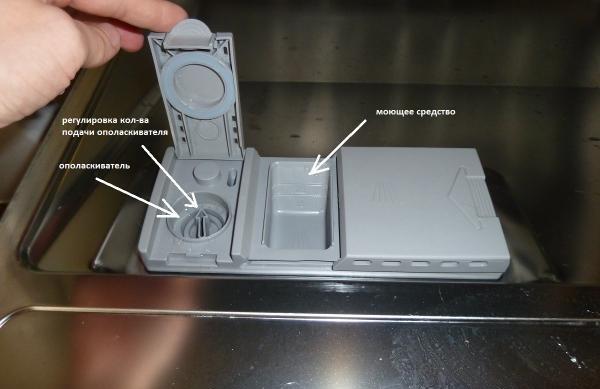
- Pour the liquid product into the compartment up to the mark, taking into account the instructions that came with this product and close the valve.
- Then, as usual, we place the dishes and cutlery in the baskets, push the baskets in and close the machine door.
- All that remains is to start the washing process by selecting the program you like.
In general, after this you can go about your business, watch TV or immerse yourself in a social network, the dishwasher will do everything itself, and the result will be incredibly dazzling. Now let's talk about the promised secrets of using liquid products.
Experienced housewives have long noticed that any liquid product is more active than powder or dishwasher tablets. There is no point in putting it down according to the norm, since in this case most of the active chemicals are washed down the drain. It has been experimentally proven that liquid product should be poured into the dishwasher cuvette 1/3 less than the amount stated in the instructions. In this case, the result will be exactly the same. The second secret is related to the distribution of liquid detergent inside the dishwasher.
It has been noticed that if a small amount of the product is applied to the baskets in which the dishes will then be placed, a thicker foam is formed during washing, which has a more active effect on dirt and helps to wash it 10% better.
We cannot confirm or refute the above statements of experienced dishwasher users, but if such opinions exist, they probably have a right to exist. Conduct the experiments yourself, and perhaps you will soon start sharing your tricks with social network users.
Top best products
TOP HOUSE is a German dishwasher detergent recommended by many machine manufacturers. This gel is produced taking into account all European quality standards. It is necessary to add salt to the dishwasher together with it, but the rinse aid is already included in its composition. A 720 ml bottle will cost about $6.
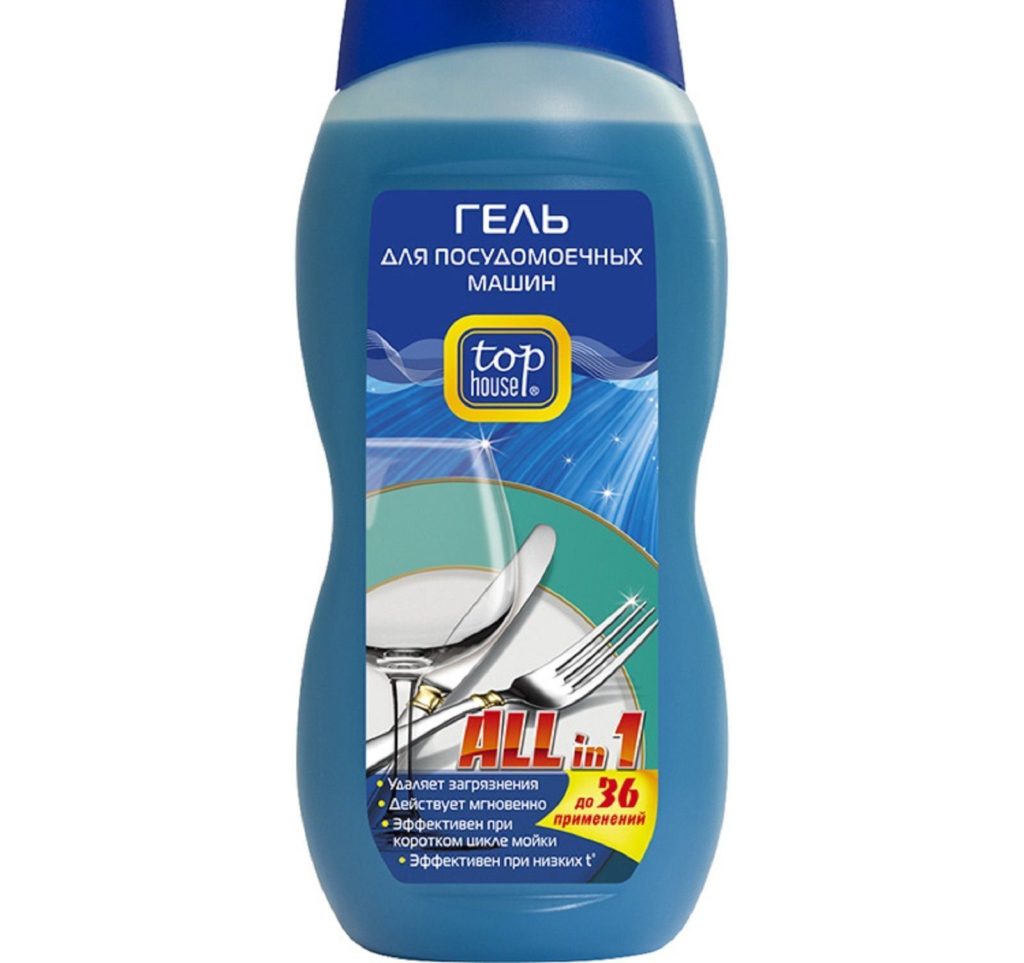
Somat All in one is a dishwashing detergent produced in Hungary. The gel is interesting in that the bottle has two parts filled with different liquids. When pouring, the liquids combine, enhancing the results of washing dishes. The product consumption ranges from 25 to 33 ml depending on the contamination. This gel contains no more than 15% phosphates, fragrance, salts, and enzymes. The price of a 600 ml bottle is about $7.
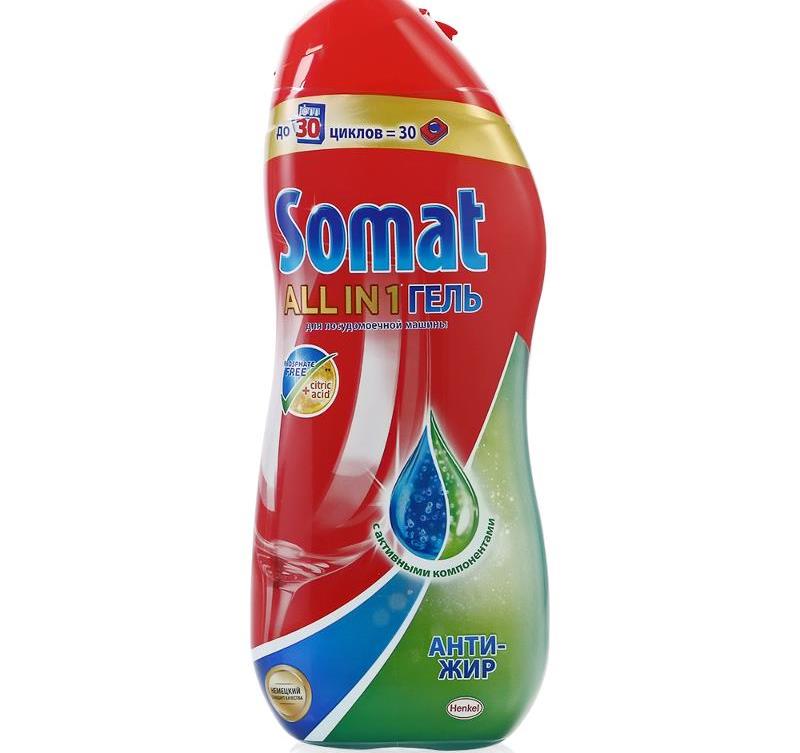
Gel Lion is a liquid dishwasher detergent from Japan. It perfectly cleans dishes and baking sheets from grease and carbon deposits, and gives glassware a pleasant shine. Lavender, which is part of this gel, neutralizes unpleasant odors from food in the dishwasher. The gel is concentrated, and therefore the consumption for 6 sets is 6 g; in case of severe contamination, the dosage is increased by 1.5 times.

Ludwik is a Polish-made gel that copes well with stains on dishes without leaving streaks on them. There is no harmful chlorine or bleach in the composition; it contains phosphates, amylase, foam activators, preservatives and polycarbonates. A 750 ml bottle of this product costs about $9.
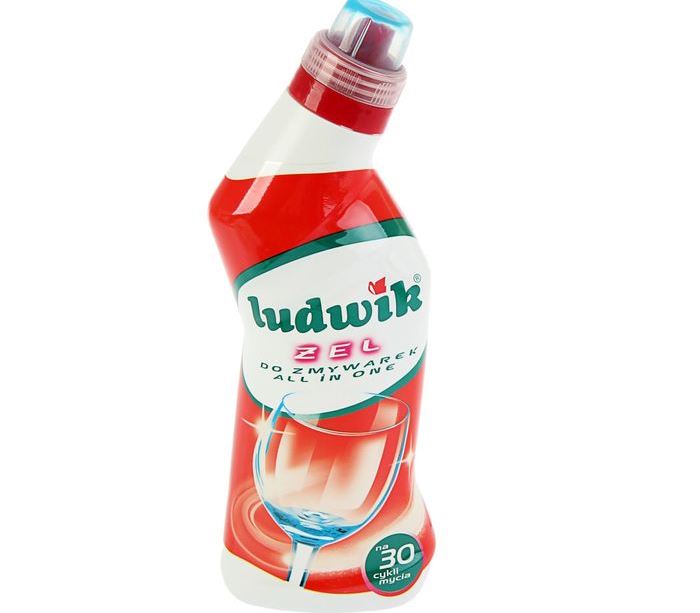
To summarize, I would like to say that there are not so many liquid detergents for the dishwasher. Although some of them are famous, consumers mostly speak poorly of them. Also, all gels are of European origin, which cannot but affect their price. Therefore, whether you wash dishes with them or not, decide for yourself, good luck with your purchase.
Interesting:
2 reader comments

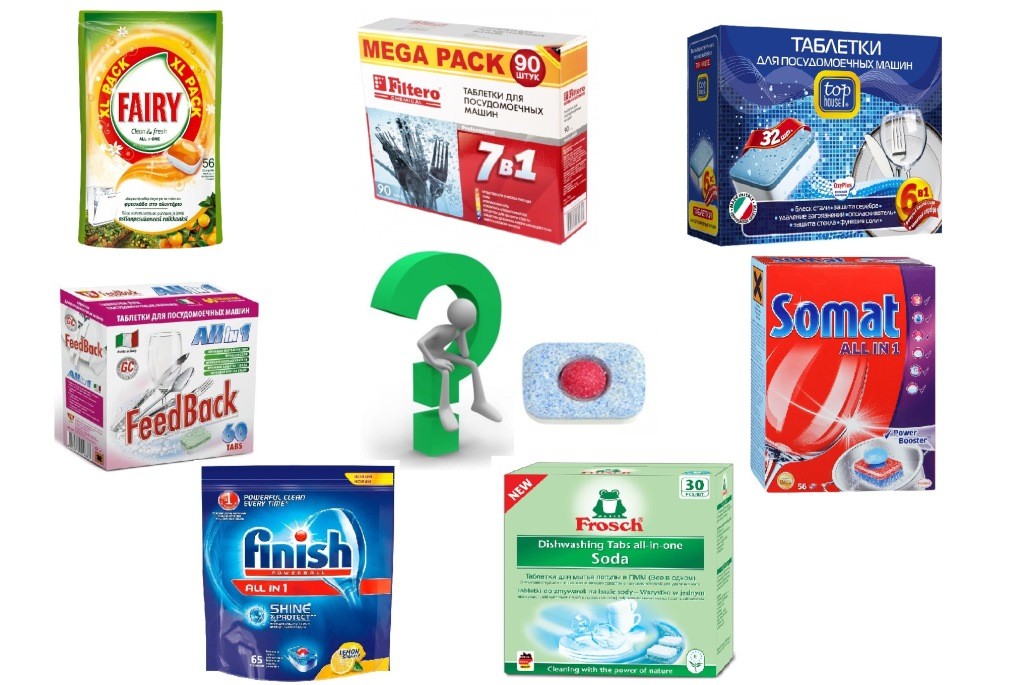

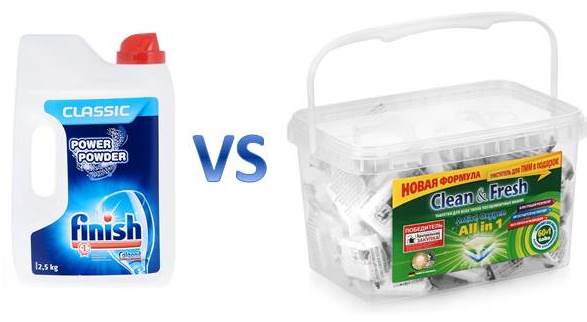
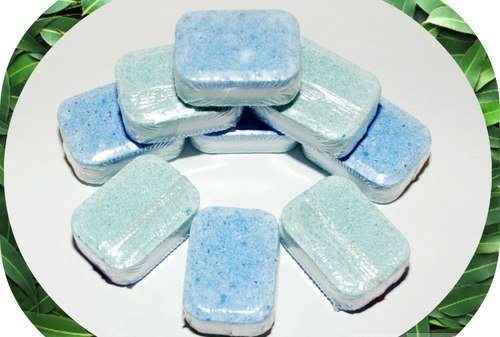
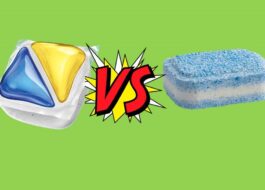
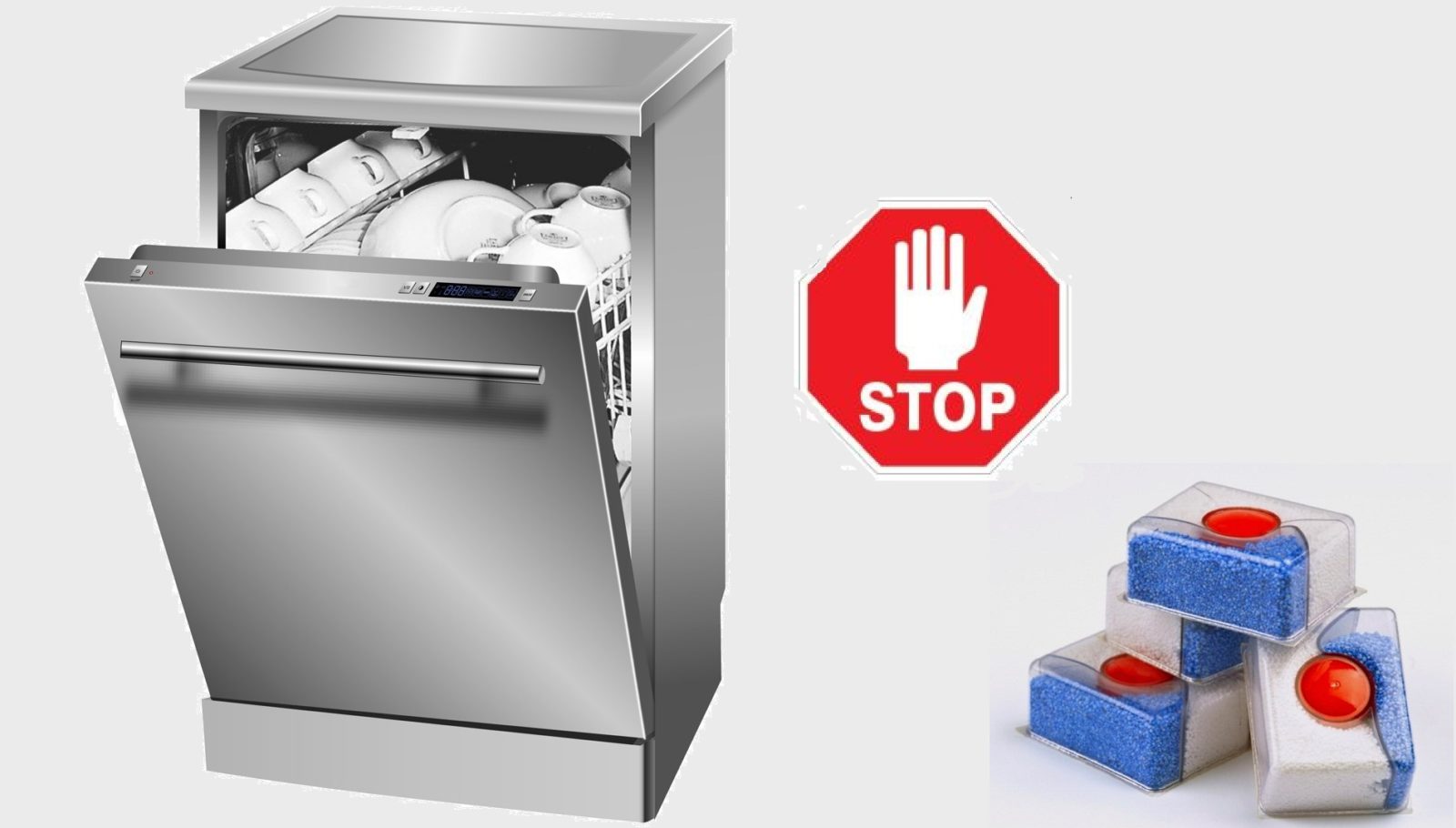














Well, firstly, the Russian company Grass produces liquid detergent for PMM that is 3 times cheaper than imported ones. But the downside is that the text of the description, composition and instructions for use is written so small that it is impossible to read it.
Take a photo of the text on your mobile phone and then enlarge it.